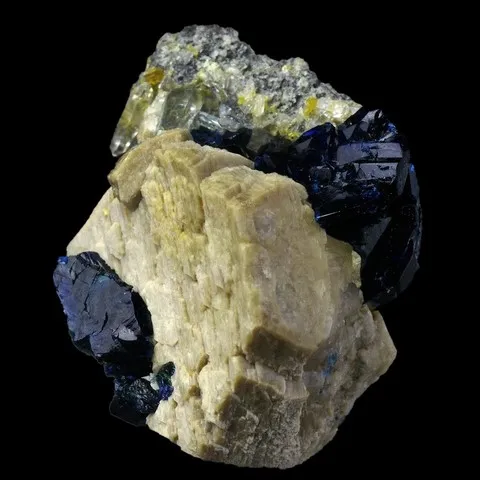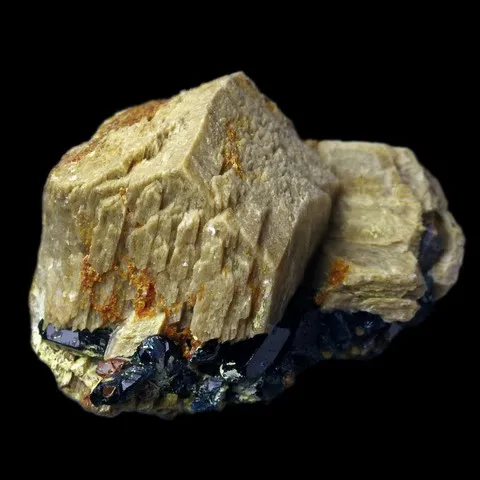WHITEITE
Class : Phosphates, arsenates, vanadates
Subclass : Hydrated phosphates
Crystal system : Monoclinic
Chemistry : CaMn2+Mn2+2Al2(PO4)4(OH)2 8H2O
Rarity : Rare
Whiteite is a rare phosphate found in some granitic pegmatites as well as in some iron-rich sedimentary rocks associated with siderite. Its name was given in honor of John Sampson White Jr (b. 1933), Associate Curator of Minerals at the Smithsonian Institution and founder, editor and publisher (1970-1982) of the Mineralogical Record. Its crystals are brown, pink or yellow, more rarely light lavender. Its luster is vitreous and its streak is white to brownish-white. It occurs as aggregates of tabular crystals or thick canoe-shaped tabular crystals. Whiteite from Rapid Creek in the Yukon (Canada), is often associated with deep blue lazulite crystals (main photo). It is a mineral unknown to collectors which is not used in any particular field.
Whiteite in the World

Whiteite in France
Whiteite is not reported in the French underground.
Twinning
This mineral commonly twins by reflection on {001} producing a pseudo-orthorhombic appearance.
Fakes and treatments
No fake inventories for this mineral species.
Hardness : 3 to 4
Density : 2.6
Fracture : Irregular
Trace : White to white-brown
TP : Translucent to transparent
RI : 1.580 to 1.591
Birefringence : 0.011
Optical character : Biaxial +
Pleochroism : Weak
Fluorescence : None
Solubility : Hydrochloric acid
Magnetism : None
Radioactivity : None

